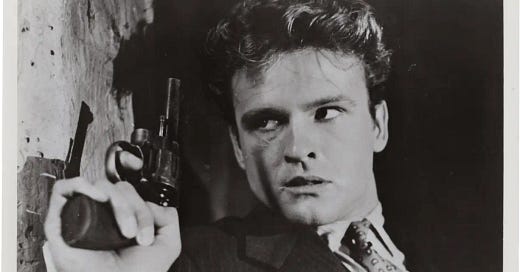Pretty Boy Floyd was one of the most notorious bank robbers in America during the Great Depression.
Dust Bowl Crime
Charles Arthur “Pretty Boy” Floyd was born in Adairsville, Georgia on February 3, 1904. Charles came from an impoverished rural family. They moved to the tiny town of Akins, Oklahoma in 1911. Floyd got into a life of crime at an early age. He was nicknamed Choc because of his love of Choctaw beer. His first arrest came in 1925, after the 18-year-old and his accomplices stole about $11,000 from a bank. He was sentenced to three and a half years. In the meantime, he was able to attend to his wife and child. By the 1930s, the Great Depression was in full swing. The American Dust Bowl was especially struck with poverty, causing many farmers to resort to thievery. Floyd was one such individual.
“Pretty Boy”
There are various stories how Floyd got his famous nickname. One story claims that his co-workers in the oil fields used the nickname because of Floyd’s pristine dress style. Another story attributes the nickname to one of his girlfriends. Floyd seemed to be a handsome man, although he hated the nickname.
Bank robberies
Floyd became associated with the bootleggers during the Prohibition era, from 1920 to 1933. Because of his fearlessness, as well as his numerous crimes, Floyd earned a formidable reputation in the Kansas criminal underworld. Floyd’s favorite weapon of choice was the Thompson submachine gun, better known as the Tommy gun. He loaded it with Type L 50-round drum magazines. Floyd’s second robbery was of the Farmers & Merchants Bank in Sylvania, Oklahoma on February 5, 1930. Although he made a successful getaway, he was arrested three days later for killing a cop. In that process, he was also charged for his earlier bank robbery. Floyd was sentenced to 12 to 14 years behind bars. However, as he traveled by train to prison, Floyd managed to break out of his handcuffs and escape. From 1931 to 1934, Floyd engaged in rampant thievery. In total, he and his conspirators robbed another 15 banks, stealing an estimated half a million dollars. Floyd’s final robbery was one of the least successful in his criminal career. He attempted to steal from a small bank in Tiltonsville, Oklahoma, where he got away with about $500. In today’s money, that would be just under $10,000.
Robin Hood
Although hated by the police, Floyd and other bank robbers were regarded as folk heroes. As they stole from banks, mortgage papers often got destroyed, which effectively abolished debts. In addition, Floyd tended to share some of his robbery spoils with poor farmers. Because of this, he became known as the Robin Hood of the Cookson Hills. Floyd was regarded as a more benign and principled of the gangsters. He rarely shot first, only targeting those cops or robbers who got in his way. He tended to avoid harming customers at the banks. Despite his gangster image, he was well-liked by many tenant farmers. His mother criticized the sensationalist press for inflating the number of crimes committed by Floyd. Floyd himself once joked, “I guess I’ve been accused of everything that has happened, except the kidnapping of the Lindbergh child last spring.”
Kansas City Massacre
A criminal named Frank Nash escaped from prison, but the cops caught up with him. Nash was one of America’s most notorious bank robbers. The police planned to take Nash by train to a penitentiary at Leavenworth, Kansas. Nash was expected to be picked up at the Union Railway Station. But Floyd and his gangsters staged a daring rescue. They broke into the train station on June 17, 1933. Armed with a machine gun and two .45 caliber automatic pistols, the gang rolled in in a Chevy sedan. At the station, cops and FBI agents were awaiting Nash. Law enforcement was equipped with pistols, but Floyd and his gang opened fire with machine guns. Four officers were killed, as was Nash. This crime is usually attributed to Floyd, although modern historians are not entirely sure if the criminal mastermind was behind it.
Wild chase
The Kansas City Massacre instantly turned Floyd into public enemy number one. His face appeared on every newspaper. In October of 1934, two men driving a car thought they had seemed a well-dressed man who looked like the notorious gangster. They reported it to the police, who were dispatched to the scene. Both cops were shot, but they managed to land a shot on Floyd. The police pursued the criminal across rural eastern Ohio. There are differing accounts on how Floyd was killed, but he died on October 22.
Learn More





